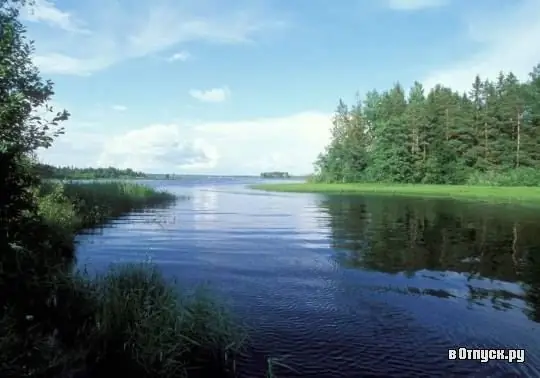
Description of the attraction
National Park "Valdai" was formed in May, namely on the 17th of 1990. The purpose of education: to preserve the unique lake-forest complex of the Valdai Upland and create conditions for the development of recreation in this area.
The park is a Russian pearl of cultural and natural heritage. Unique landscape complexes, archaeological, historical and cultural monuments are amazingly combined on the territory of the park. Valdai landscapes are of great aesthetic value.
Since ancient times, Slavic tribes have settled on the territory of the park. The list of archaeological monuments includes 82 objects: fortified settlements, ancient sites, settlements, barrows, hills. Valdai open spaces have a rich history associated with the cultural life of the Russian Federation. In Opechensky Posad there is a house with a mezzanine; the writer P. V. Zasodimsky. The life of such great people as A. V. Suvorov, F. M. Dostoevsky, N. N. Miklouho-Maclay is also associated with the Valdai Territory. N. A. Nekrasov.
The colorful nature and rich history of this land have always attracted and attract many poets, artists, composers to these places. These lands were visited by A. Radishchev, L. Tolstoy, A. Pushkin, N. K. Roerich, I. I. Levitan, N. A. Rimsky-Korsakov, V. V. Bianchi and other eminent cultural figures.
The Iversky Monastery is located on the Selivetsky Island of Valdai Lake. The monastery is a valuable historical and cultural monument. The construction of this monastery had a special impact on the development of the Valdai village. Mainly, this determined the development of trade and crafts.
Another valuable architectural monument is the Church of Catherine, erected in 1793, the author of the project is the famous architect N. A. Lviv. The church has the shape of a rotunda and is an architectural monument of Russian classicism. Now it houses the Museum of the History of Valdai. However, the city of Valdai itself is a historical attraction - in 1996 it celebrated its 500th anniversary. In a village called Nikolskoye, the first fish breeding plant in the Russian Federation is located.
According to the poetic legend, the development of bell-casting business in Valdai began with a historical event - the annexation of the glorious city of Novgorod to Moscow. As if the veche bell of Novgorod, during its transportation to Moscow, rolled off a cliff near Valdai and fell apart into a great many small bells. In Valdai, bells and bells were cast, as well as huge bells, the weight of which reached two thousand poods.
About 120 thousand tourists visit the park every year. Natural heritage sites attract tourists to Valdai. First of all, these are the lakes of the park, the largest of which are Valdayskoye, Seliger (explored by water tourists), Borovno, Velie and a number of other lakes.
The rivers and lakes of the park are famous for a variety of fish species: bream, pike, burbot, crucian carp, tench, smelt, pike perch, vendace, ruff, perch, roach and others. The fauna of the inhabitants is no less diverse. Here you can find wild boar, bear, elk, badger, fox, white hare, marten, lynx. As well as other animals associated with living in the water: otter, beaver, water rat, mink, ducks. The wolf is common. From the order of chickens, there are numerous black grouse, wood grouse, hazel grouses.
The vegetation cover is represented by spruce, pine, and birch forests, there are territories of northern oak forests with ash, hazel, forbs, there are dry meadows, raised bogs.






